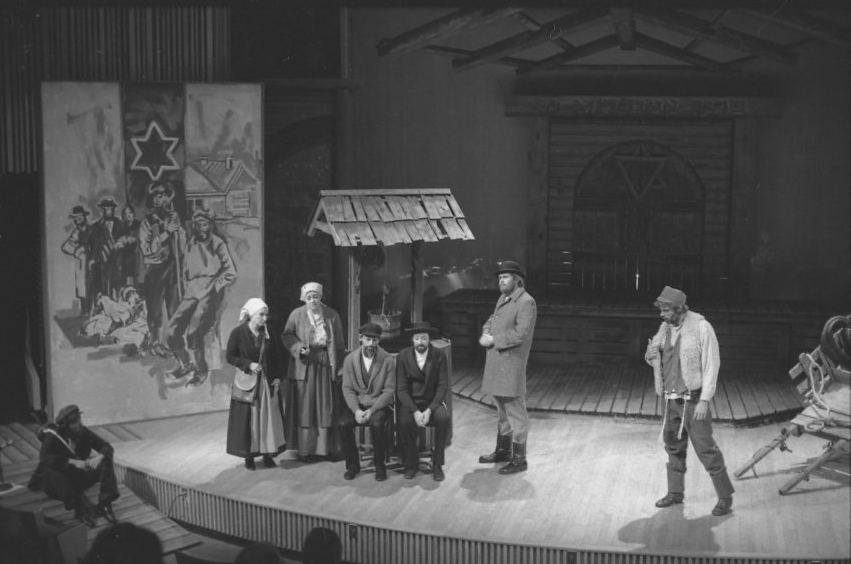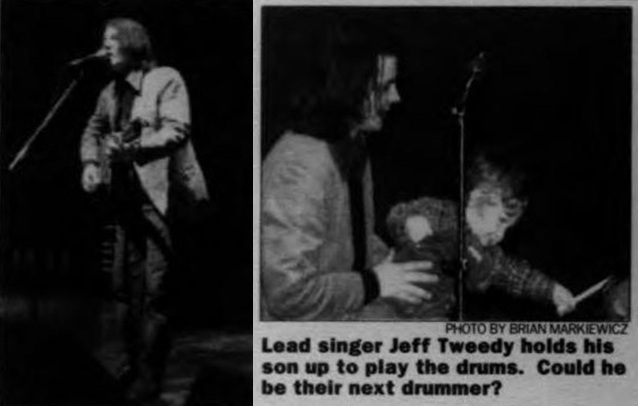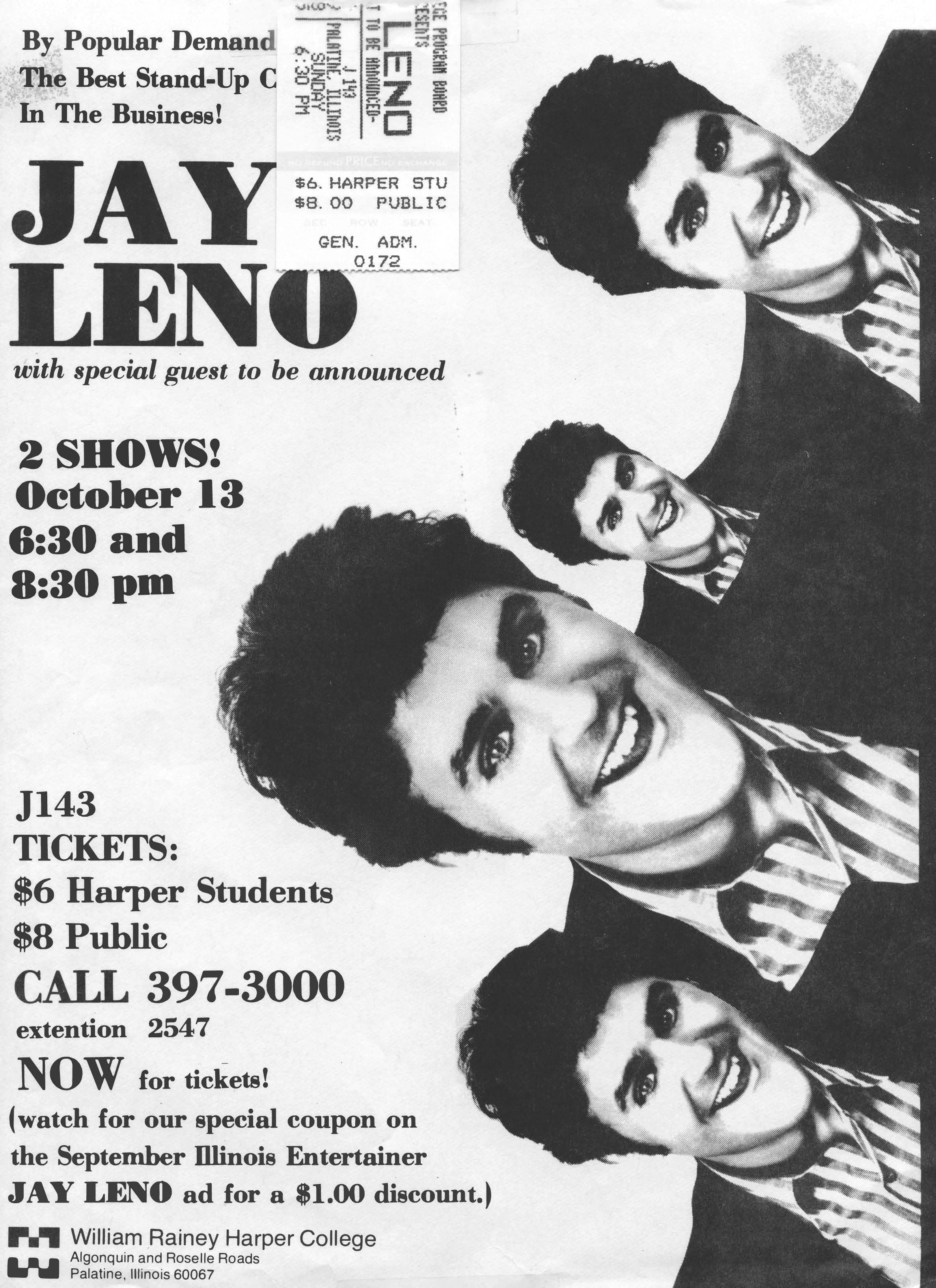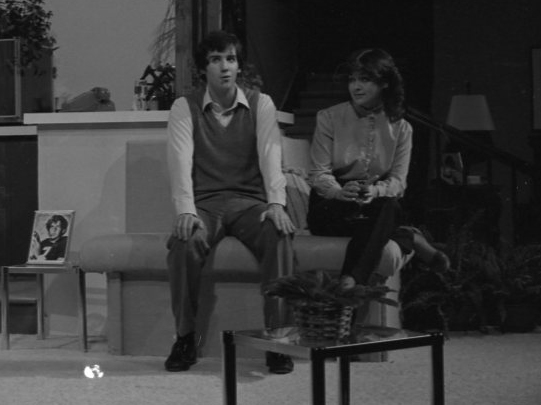Harper College will be closed from Wednesday, December 24, through Sunday, January 4, for Winter Break.


The Harper College Ensemble Theatre Company presented "Fiddler on the Roof" in J Theatre in 1983, not long after the "glorified classroom" began to be used for live theatre, concerts and other performances. (Courtesy of the Harper College Archives)
There’s no applause left in J Theatre.
This summer, as demolition crews raze Building J, they’re taking down more than just brick and concrete – they’re dismantling a stage that helped launch careers, sparked lifelong friendships and turned student dreams into standing ovations. It’s where Jay Leno cracked jokes, Adam West shared stories and Buddy Guy made a memorable entrance.
Decades ago, the J Theatre was the coolest place to be on Harper College’s campus. In the ’80s, Jerry Seinfeld did stand-up there. In the ’90s, Wilco rocked the small venue. All the while, Harper’s Ensemble Theatre Company staged musicals, plays and Shakespearean productions in the intimate performance space.
Long after some of the biggest names in entertainment “tore up” the J Theatre stage, demolition crews are literally bringing down the house. The 347-seat venue and the rest of Building J are being razed this summer to make way for Harper’s new Business and Social Sciences Building – a modern educational facility that will also house a theater.
While the new facility will include elements and even necessities that the J Theatre lacked, it will have quite a legacy to live up to, considering that the J Theatre’s stage was shared by the likes of the Gin Blossoms, Robert Altman, Dick Dale, Paula Poundstone, Pamela Des Barres and dozens of theatrical productions. Yet that wasn’t the college’s original intention for this space, named J143 when Building J was erected in the early 1980s.
“It really was a glorified classroom,” said Michael Nejman, who retired as Harper’s director of student activities in 2012. Before he stepped into that role, he was the campus activities coordinator responsible for music, comedy and entertainment acts that performed at Harper in the ’80s and ’90s. And before that, he was a Harper student. “J Theatre was a lecture hall that we turned into a performance venue. Theatre Manager Kevin Geiger worked to make sure every production looked great.”

Chicago rockers Wilco, with frontman Jeff Tweedy, performed at the J Theatre in 1997. 'The Harbinger' student newspaper published these photos from the show, including one showing the lead singer helping his young son Spencer play the drums. Spencer later became a drummer, playing with his dad, Mavis Staples, Norah Jones and Waxahatchee. (Courtesy of the Harper College Archives)
Michael brought in the big-name acts, but he also credits retired Theatre Arts Professor Mary Jo Willis with making J Theatre a place that could host live performances. Mary Jo, who began teaching at Harper in 1975, had already built the theater program from a student-run club into an ensemble that staged multiple productions a year in the campus spaces were available (including Harper’s TV studio). A lecture hall wasn’t ideal, but it was an improvement.
“It was a stage! It had a booth in the back,” Mary Jo remembered. “The first thing we staged was Guys and Dolls and we had to rent everything and get poles to hang the lights on. The three days before tech week, nobody went home.”
Repeatedly setting up (then striking) sound and lighting equivalent was one challenge. Another was that the room lacked some essential components: a box office, dressing rooms and a functional backstage area. Like any worthwhile thespian, Mary Jo improvised. A folding table became the box office. Early childhood education classrooms became temporary dressing rooms. And actors had to be extra careful when entering and exiting through the stage doors, which led directly into the parking lot.
“They would have to leave the building, go down the stairs and around the back to make their entrances,” Mary Jo said, recalling an instance when one student actor did her best to hide her muddy costume because she had slipped outside. “For musicals with larger casts, we learned to rent a trailer and park it out back. It was never easy, but it got easier.”
Indeed, Mary Jo eventually convinced college administrators that permanent lighting fixtures and a sound board were essential. J Theatre was later remodeled to add a box office, but the backstage situation was never remedied.

Because of the J Theatre's lack of a backstage area, Buddy Guy saw an opportunity to make a memorable entrance in 1990, delivering a guitar solo as he entered at the back of the venue and walked downstairs to the stage. (Courtesy of the Harper College Archives)
Michael discovered a strategy when working with touring performers who expected a dressing room and a backstage entrance to the stage.
“I wouldn’t tell the artists until they were on site,” Michael remembered, laughing. “I’d tell them their options were they could come through the audience or go around outside. Buddy Guy came on an especially cold night and he was looking at me like I was crazy.”
So, Chicago’s beloved blues legend hatched a plan with his band. The group began playing, introduced Buddy mid-song and he appeared at the back of the J Theatre, launching into a screaming guitar solo as he walked down the stairs to the stage. The 1990 show ended with him soloing his way back out of the theatre and playing the final notes from the lobby. As a result of the theater’s limitations, concertgoers saw a unique performance.

This poster, with an original ticket stub attached at the top, promoted one of Jay Leno's three Harper College performances in the J Theatre in the 1980s. At the time, Leno was quickly becoming a comedy star and would eventually be named the host of "The Tonight Show" in the early 1990s. (Courtesy of the Harper College Archives)
The lack of backstage dressing rooms wasn’t an issue for Jay Leno, who played Harper three times in the ’80s as he was becoming an A-list comedian. Michael said that Leno was more interested in hanging around the box office, talking to students and fans as they arrived. In those days, Michael would also serve as transportation for the touring performers and he remembered picking up the future host of The Tonight Show from O’Hare Airport in his Toyota Tercel.
“We’re on I-90 and he sees that my ‘check engine’ light is on,” Michael said about Leno, who is famous for his automotive expertise. “He says, ‘pull over.’ And so, we’re on the side of 90 and Jay Leno is fixing my car. He quickly assesses it’s a brake problem and makes an adjustment to the master cylinder. The light goes off and we continue to Harper.
“Later on, Jay is greeting fans and one of them goes, ‘Hey, I thought I saw you on the shoulder of 90 on my way in, but I thought, that can’t be Jay Leno because he’s fixing a (junky) Toyota.’ And I had to say, ‘Sir, that was my (junky) Toyota.’”
Many comics came to Harper because Michael forged a partnership with Rick Uchwat, owner of Zanies Comedy Club. The college hosted Jon Stewart and Richard Lewis (who each played the larger Building M gym because of demand) as well as Paula Poundstone and an unannounced Jerry Seinfeld.
Michael explained that all of the comics had a clause in their contracts that they could back out if they were able to land a booking in Las Vegas or were asked to do Johnny Carson’s Tonight Show. In the late ’80s, Harper had booked comedian John Caponera to appear, only for him to cancel a week beforehand for one of those reasons. His replacement was a comparatively unknown Seinfeld.
“I thought, ‘oh no, this whiny guy?,’” Michael laughingly remembered. “But on that night about 150 people saw the comic who would become the biggest comedy star of the next decade.”

Harper alumni Sean Colbert and Laura Pulio Colbert first met when acting in "Chapter Two," performed at the J Theatre in 1982. They became friends and later got married. Laura and Sean recently retired as Harper employees, with Laura having directed many theatrical productions in the J Theatre and elsewhere on Harper's campus. (Courtesy of the Harper College Archives)
While some audience members witnessed future TV superstars at Harper, others had their professional, and personal, lives forever altered by their experiences in J Theatre.
Laura Pulio Colbert was a young theatre arts student in the early ’80s, learning at the hands of Harper faculty, including Mary Jo (who directed her in Pippin and Fiddler on the Roof) and the late John Muchmore (who directed her in Neil Simon’s Chapter Two). She recalled learning about acting, theatre and herself in J Theatre.
“As an actor, I love seeing the audience,” Laura said when considering the intimacy of the room, where no seat was more than 50 feet from the stage. “J Theatre is where I began that love.”
Speaking of love, J Theatre is also where she met her future husband, Sean Colbert, who was her co-star in Chapter Two in 1982. Thinking back on that time, she guffawed while describing the two of them as “skinny dorks who had no idea what they were doing.”
As students, Laura and Sean became close friends, but it wasn’t until Laura returned to Harper as an instructor that they fell in love. In the intervening years, she studied at the Moscow Art Theater and under Patrick Stewart and Ian McKellen in England before getting hired by Mary Jo to teach and direct her own shows (from A Midsummer Night’s Dream to Little Shop of Horrors) in J Theatre.
“J143 made me. It developed my style because it limited what you could do. But I loved wrapping my actors around the audience,” she said, discussing how J Theatre influenced her approach even when Harper’s productions moved to the purpose-built Performing Arts Center in the early 2000s. “I still utilize aisle entrances, even when I direct shows at the PAC. It reminds you that this artform is live – it’s not a movie.”

Laura Pulio Colbert directed "Little Shop of Horrors" in J Theatre in 1998. With no backstage, she created opportunities for cast members to enter through the audience, as shown in these photos from rehearsal. (Courtesy of the Harper College Archives)
It should be mentioned that J Theatre also functioned as a movie house, sometimes hosting screenings of Nashville and Pink Flamingos followed by discussions with their directors (Robert Altman and John Waters, respectively) or a series of World’s Worst Film Festivals, which screened infamously terrible movies like Ed Wood’s Plan 9 From Outer Space.
“We’d show five movies, charge $5 and for every film you made it through, you got a dollar back,” Michael said. “We handed out ‘barf bags’ and paper wads you could throw at the screen. It was a lot of fun.”
Other fun moments occurred in J Theatre because the space was shared between so many different events (before Harper’s PAC, Drama Lab Theatre and Film Lab were built). Michael recalled that singer-songwriter Peter Himmelman played a show as the Harper Theatre Ensemble was readying a production of Bus Stop and was asked if he was OK with performing on the play’s set. A musician with a knack for improvisation, Himmelman abruptly requested Michael to have someone run out and buy milk and donuts.
“We had no idea what he had planned, but after a few songs, he asked the audience if anyone wanted to come up on stage, which was set up like a diner, and have donuts and milk,” Michael said. “He got the student who was playing the waitress in Bus Stop to serve the four-to-six brave people who agreed and they all became part of the show.”
Nearly 35 years after J Theatre opened, Harper now boasts a variety of performance spaces, soon to include the new Business and Social Sciences Building auditorium that will be situated near the site of its predecessor. More importantly, it will feature a backstage area, a balcony, built-in lighting and sound. With all its drawbacks and virtues, J Theatre is now the stuff of memories, and mostly good ones.
“If not for Harper, I wouldn’t have my husband, my kids, my family, not to mention my second mother and mentor, Mary Jo,” said Laura, who along with her husband Sean, recently retired from Harper. “You can tear buildings down, but you can’t break relationships.”